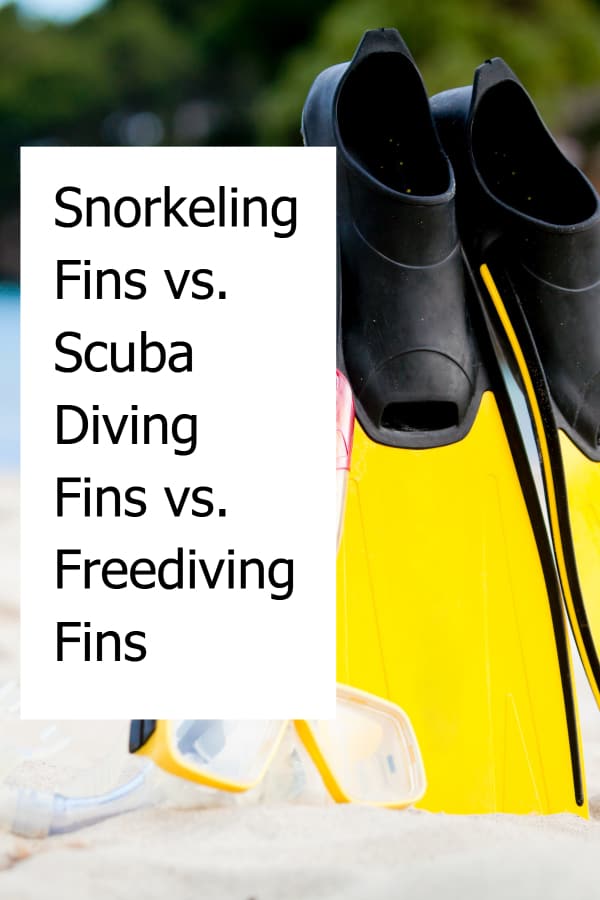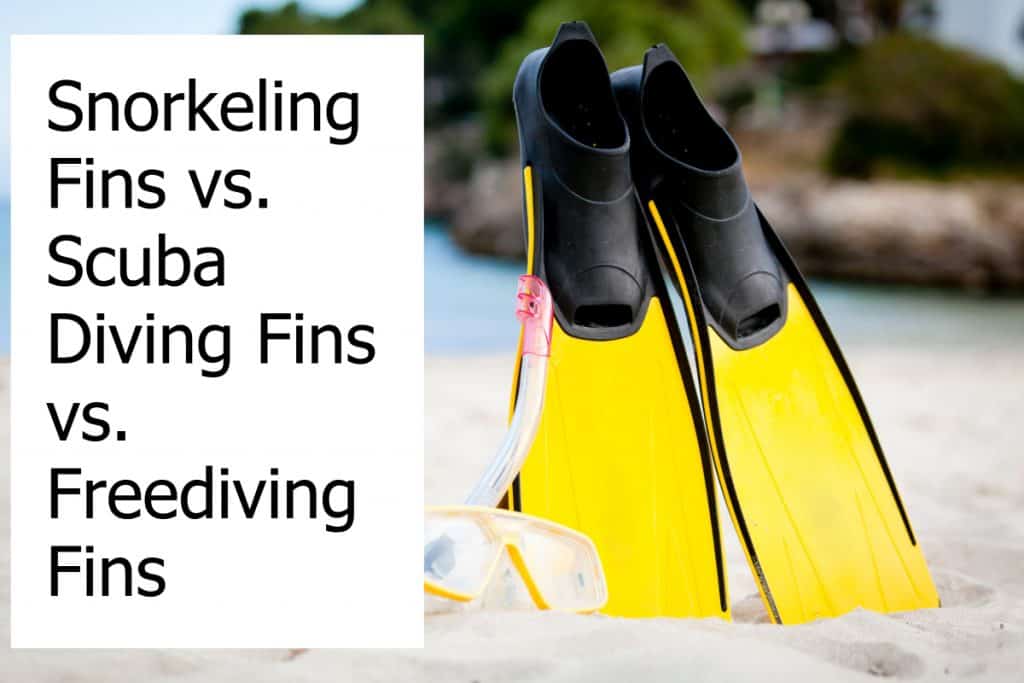Snorkeling Fins vs. Scuba Diving Fins vs. Freediving Fins
Fins come in a variety of shapes and sizes, and whether you are experienced underwater or a beginner, it is important to know what the best design will be for your particular dive. What can be most confusing is the difference between snorkeling fins, scuba fins, and freediving fins.
Say, for example, you spent a good amount of money on some quality diving fins. Do you really have to purchase a new pair to go snorkeling? Or, what are the drawbacks of using short, snorkeling fins to do deeper dives?
In this post, we’ll share with you some of the key differences between the types of fins on the market so that you can make a decision about what will work best for your dive.
The Snorkeling Fin
Snorkeling is a widely popular activity, and it’s easy to see why. The sport is done at shallow depths without needing fancy equipment or much experience, and in most areas where snorkeling is popular, you can have access to vibrant reefs and shallow water wildlife.
The snorkeling fin reflects that accessibility factor. These snorkeling fins are generally designed to be simple and straightforward, something that you can easily throw on before getting into the water.
They come in a variety of lengths, ranging from the very short travel fin of around 15-20″ to the more traditional style with 24-26″ and tend to lack most of the features that help divers navigate water at deeper depths. They usually have a full foot pocket but you can also find them with an open heel.
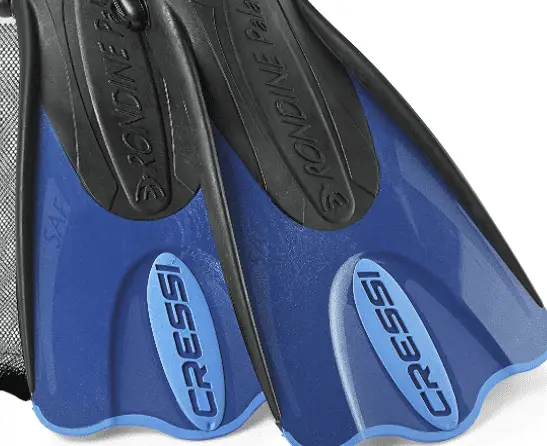
Why are these qualities helpful? For a couple of reasons. The most important, of course, is how these fins perform in the water. The shorter fin allows snorkelers to make small, flexible movements, which is ideal for paddling about just below the surface.
With the shorter fins, you’ll be less likely to accidentally damage the reef and you can get out of tight spaces with a bit more grace. An added benefit of the length is the ease with which snorkelers can get in and out of a boat or walk right onto the beach.
The Diving Fin
The scuba diving fin is probably the most standard-looking fin on the market. The length of scuba fins generally starts where snorkeling fins leave off at around 25″ and tend to stay under 30″. Like the snorkeling fins, scuba fins come with the option of the open heel or full foot pocket.
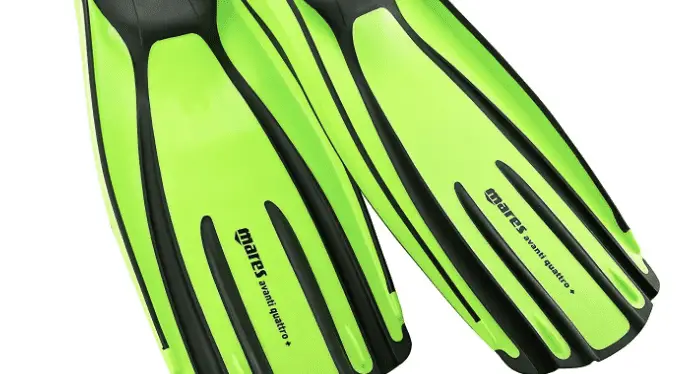
Diving fins really differentiate themselves in the technology of their design. With more options for control and efficiency of the kick, it’s clear that scuba fins are made for more challenging conditions.
For instance, because diving takes place at higher water pressure that can be more difficult to navigate, advancements like the split fin and channels in the paddle fin become more important for the diver. These scuba fins also tend to be stiffer and thicker for durability and power.
As the scuba diving fins are longer compared to snorkeling fins, they are harder to control and use. They are also built stiffer which increases the propulsion you can generate underwater. You will need to work harder with your leg muscles when you compare to shorter snorkel fins. Yet, most leg muscles are required when you’re using freediving fins!
The Freediving Fin
Freediving fins are a bit of a fringe product on the market. Let’s face it, freediving is not the most common underwater sport. Because of the absence of breathing equipment, the freediver truly relies on quality freediving fins to be able to move quickly and powerfully through the water.
So how does the freediving fin achieve this? Length. Most freediving fins exceed 30″ and some can be as long as three feet. In terms of flexibility, freediving fins tend to be on the stiffer side, which will take a certain amount of skill but really pays off in power.
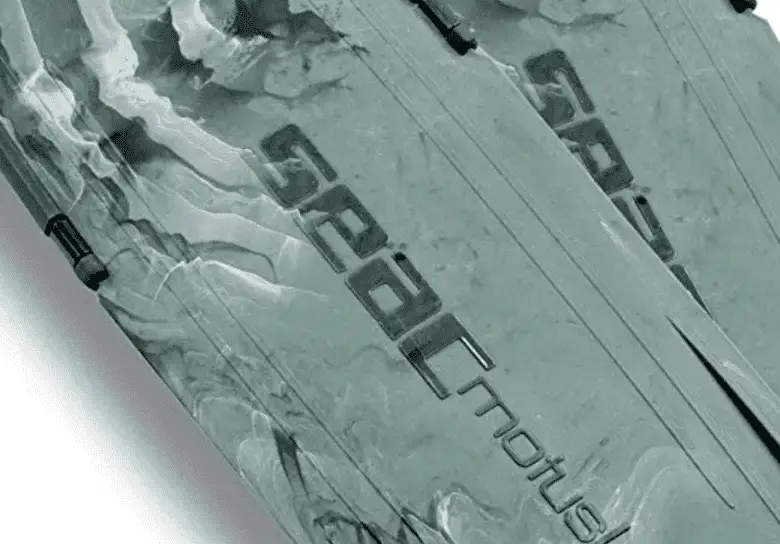
Within the world of freediving fins there is also the monofin, probably the most outlandish-looking and specialized product on the market. In this design, both feet are inserted into a single blade to create something like the caudal fin on a fish or a whale. While tricky to get used to, this design is supposed to be the most efficient way to propel yourself through the water.
Another typical design characteristic of the freediving fin are the full foot pockets. When you’re speeding through the water with only a few minutes of exploration, you don’t want to be in a situation where your foot could fall out of an open heel strap on your freediving fins.
A tight sitting foot pocket is the most often picked choice by freedivers. The full-foot pockets have to fit tight so you won’t slip out of the pair of fins.
Of course, you can find freediving fins with an open heel, but the full-foot pocket is far more popular. Where scuba fins have at least half of the fins available being open heel design, you find that the majority of freediving fins come with full foot pockets.
Freediving fins, as they are much larger than scuba fins, are also heavier and constructed of stiffer material. You’ll often find various mixtures of plastic and even fiberglass or carbon being used.
Freediving Monofin
One of the unique freediving fin designs is the monofin. The diver puts both feet into a single fin that is much larger than the typical bi-fins for freediving.
The Monofin has made huge inroads in freediving competitions. Anybody wanting to compete with the best is most likely starting to use a freediving monofin which provides more thrust.
The monofin for freediving is similar in shape to a dolphin’s tail. Seeing how fast and deep dolphins can dive, it’s not the worst shape to try to emulate.
If you consider switching to using a monofin for freediving then be aware that it won’t be easy. It’ll take you a while before you master using the monofin efficiently. Yet, the performance improvements you can gain from using such a monofin will make it worth struggling initially!
While a freediving monofin certainly looks different from the traditional fins, the materials used are the same. Similar to the bi-fins for freediving, you’ll have a much stiffer fin compared to scuba fins. Using softer materials would make it overall easier to use the fins but cost a lot of performance.
Is The Crossover Possible?
Clearly, we are talking about really specialized fins here, but how restrictive are these design advancements? Can you use one type of fin for more than one activity?
The short answer is a hesitant yes.
The best way to think about it would be on a spectrum. Here, we mentioned snorkeling first because it is the least specialized in terms of equipment, and more flexible in what you can use.
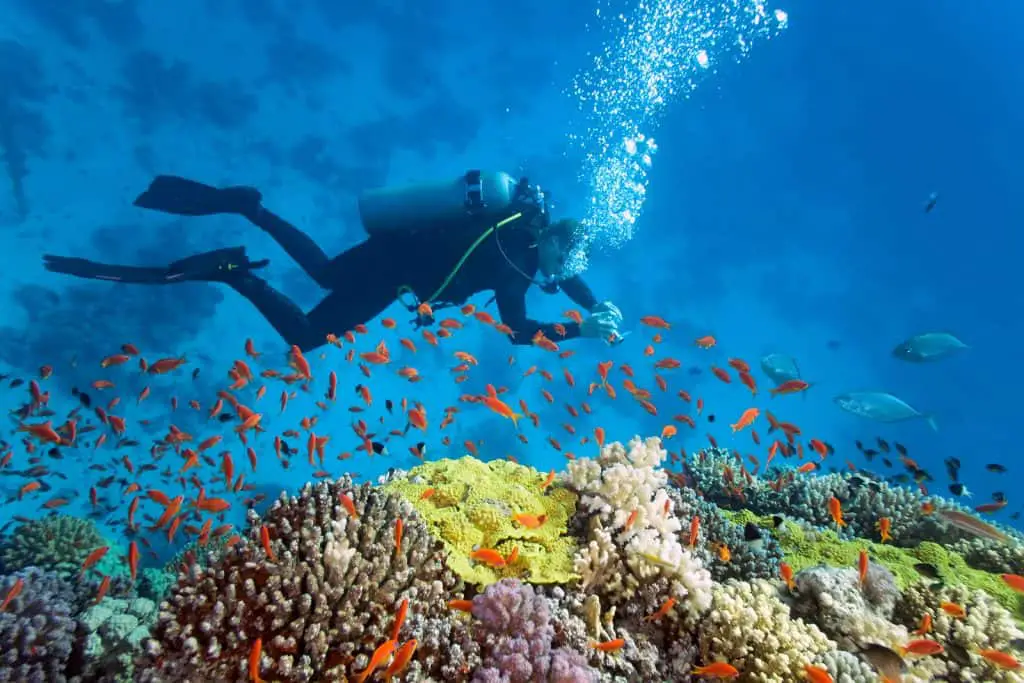
Sure, you’re going to be more comfortable with a snorkeling fin, but a scuba fin or even a freediving fin is going to be nothing more than an inconvenience. In fact, for a long time, people used scuba fins for snorkeling.
Specialized snorkeling fins have only been available in recent years and snorkelers used scuba fins before. Overall, when you compare snorkeling fins vs scuba fins, the differences are in many cases pretty small.
However, as you get into the more advanced end of the spectrum, with scuba and freediving, the fin choice has a stronger impact. Using the small snorkeling fins in a deeper dive or in a free dive, for instance, is just not going to cut it.
You are going to be expending too much energy and will probably slow down your diving partner. That said, switching out scuba fins for freediving fins may not be too much of a hindrance and vice versa.
Overall, once you’ve had some experience in each of these practices, you are going to start getting pickier about your fins. After all, the specialized advancements have come from divers wanting to improve their experience, and you are going to have a better time when you choose the fin that was designed for whatever sport you’re doing.
